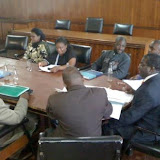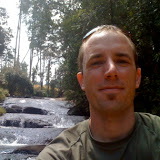The position in subtle variations is so ubiquitous across this region of Africa that my coming blends in with the seemingly endless flow of HIV/AIDS programs and personnel. I have an office in the city government and liaise with the City AIDS Coordinator amongst many others. My principle assignment is basically to grasp the current extent of the HIV/AIDS response in the city, provide key indicators of its performance to the city government, and assist them in improving their coordination of the response.
An estimated 88,000 individuals reside within Zomba city, with a daytime population easily surpassing 100,000. 15 health facilities operate within the city boundaries, including a regional hospital, a mental hospital, and institutional hospitals and health centers at the police, prison and military campuses. 53 community based organizations are registered with the city government with mandates to provide social services, including HIV prevention, care and support, to city residents. The National AIDS Commission and countless NGOs have been implementing HIV/AIDS programming here for over a decade.
The national prevalence of HIV/AIDS is currently estimated to be 12%. Though the prevalence is thought to be even higher in the south of the country, where Zomba is located, with urban areas even more affected. Here prevalence rates are estimated as high as 18%, translating to nearly 1 in every 5 individuals living with HIV. The epidemic is generalized, affecting all groups, with women experiencing higher prevalence rates due to biological and socioeconomic determinants that increase their risk of acquiring HIV. There is no one here who has not been directly affected by the epidemic; the loss of loved ones, the risks of pregnancy, childhood and adolescents, the economic instability of a diminishing workforce. HIV/AIDS is omnipresent, an oppressive plight within the warm heart of Africa.
That said HIV/AIDS is an elusive evil, one that lies beneath the surface of the social fabric. It is a virus that suppresses the immune system of those infected; increasing susceptibility to opportunistic infections that can quickly erode quality of life, if left untreated. As such its outward expression is of a host of infections that lead to skin lesions, persistent coughing and wasting. Its acquisition is marred by the social taboo of discussing sexual practices that are tightly intertwined in the cultural and socioeconomic reality of those affected. In a society that values high parity and sees being overweight as a sign of success, HIV/AIDS brings shame on a family. Thus in difference to those infected and affected, HIV status is handled with discretion.
The burden is carried silently as those affected toil in the fields and markets. Nor is it the only hardship that must be endured. It is the latest and arguable the most deadly in a long line of diseases that compromise the health of African society. HIV/AIDS is also an addition to every other hardship that comes with living an impoverished life; the grueling physical labor, the uncertainty, the parade of material objects that are out of reach.
If poverty is an oppressive lack of information and options, HIV/AIDS exacerbates the situation; pushing the dreams of the young couple out of reach, robbing the old of their children and burdening them with more grandchildren then they are capable of caring for. In this context, it seems reasonable that the pain caused be gently hidden from view and a focus be given to family and more immediate challenges.
As treatment and care programs are being scaled up, people are living longer and speaking out. Gains are being made and Africans are learning to adapt in ways that not only ease the dangers of the current epidemic but also prepare them for future challenges. But the scars have been left on a generation of children that see the suffering and continuous funerals as the norm in a childhood devoid of choice and opportunity.
What does it all mean for an HIV/AIDS technical advisor? It means that daily I stare into the invisible eye of an injustice that is crippling those selling me bananas or kind enough to ask me how I am doing. Such a reality is enough to take your breath away. It is also a dilemma so large in its totality and complex in its composition that it can thwart the efforts of thousands of motivated and good intentioned individuals. On the best of days, it is an immense beach slowing being eroded by a tide that makes uneven passes at its miles of dense sand. At worst, it is completely out of reach, something visible but untouchable floating through space and time claiming those around you, frustrating your best efforts in strangling it before it can claim another life.
The Importance of Being Earnest
4 years ago




